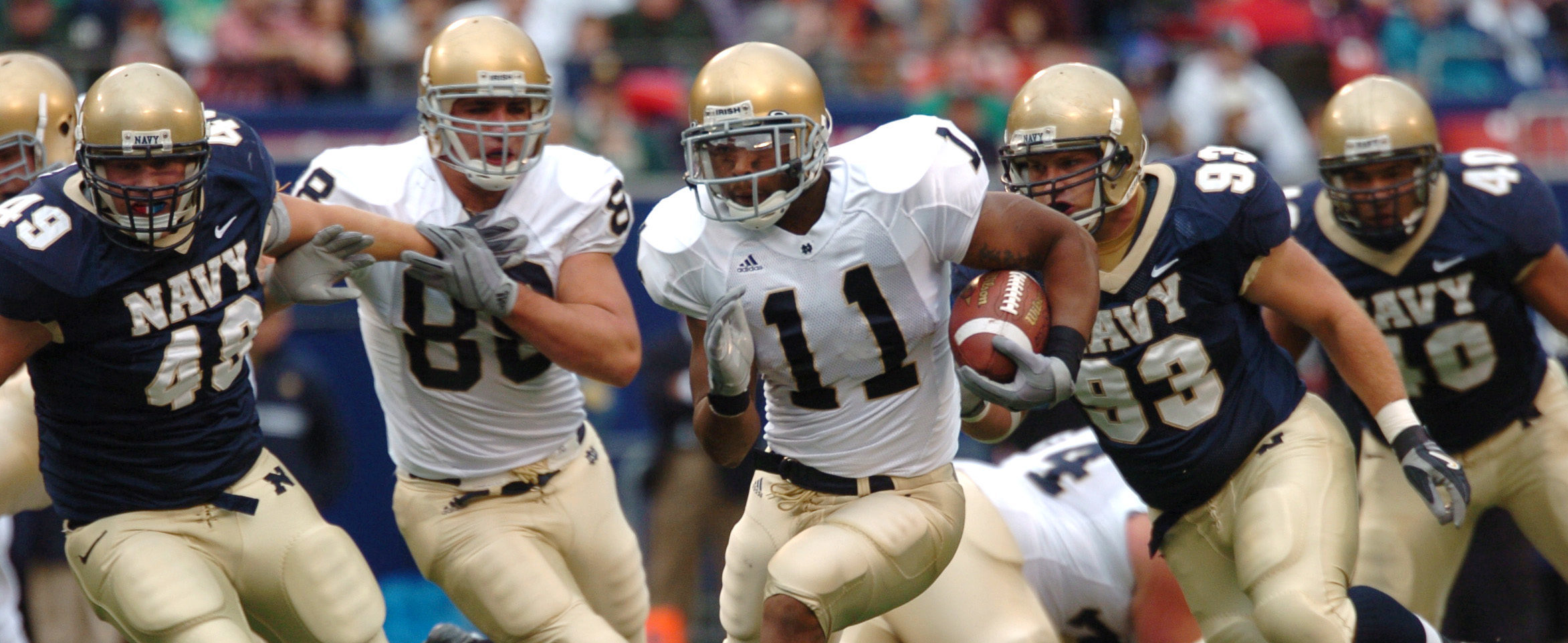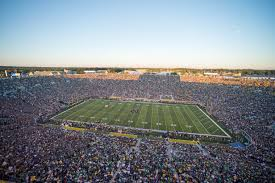Two weeks ago, the 5-5 Notre Dame Fighting Irish met the 6-4 Army Black Knights at the New Yankee Stadium, continuing a traditional rivalry that is perhaps one of the most storied in college football. It was the 50th meeting between the two teams, one in which the Irish ran onto the field in their green jerseys, a move historically saved for psychological advantage in big games. While neither team is quite where they were during the height of this historic rivalry, the atmosphere at Yankee Stadium brought back memories of some of the greatest moments in historic Notre Dame-Army games.
The first meeting between the Irish and Black Knights came in 1913, when Notre Dame traveled to West Point and routed Army 35-13. But the rivalry, and the lore, would only grow from there. Following a 13-7 Irish victory in 1924 at the Polo Grounds in New York, sportswriter Grantland Rice included in his description of the game the historic and famous words, “Outlined against a blue, gray October sky, the Four Horsemen rode again. In dramatic lore they are known as Famine, Pestilence, Destruction and Death. These are only aliases. Their real names are Stuhldreher, Miller, Crowley and Layden.”
The game drew such attention from immigrant communities in New York that the owners of the recently opened Yankee Stadium invited them to play there in 1925. The two teams would play there every year for the next 22 years, except Knute Rockne’s last season, 1930, when they played at Soldier Field in Chicago.
Over those 22 years, Notre Dame and Army, two powerhouses of college football, would play some of the best games in the history of the sport. The Irish won 14 games, Army 5, and three games ended in a tie. One of the more well-known Notre Dame victories came in 1928, when Knute Rockne gave his legendary half-time speech imploring his team to “win one for the Gipper.” They did, with a final score of 12-6.
Prior to World War II, Notre Dame dominated the rivalry, going 10-0-2 from 1932-1943. But when war broke out, many of Notre Dame’s players, including Coach Frank Leahy enlisted to serve while Army kept its best players. The result was back-to-back thrashings of the Irish, 59-0 in 1944 and 48-0 in 1945.
So when the Irish players came home, they were looking for some revenge, and the 1946 game did not disappoint. In what many call the game of the century, the two teams battled to a 0-0 tie. The game featured twelve future College Football Hall of Famers, and both sides had two Heisman Trophy Winners, Army’s Doc Blanchard (1945) and Glenn Davis (1946); Notre Dame’s Johnny Lujack (1947) and Leon Hart (1949).
In 1947, Army announced that this year would be the last for the rivalry. They traveled to Notre Dame Stadium, but lost to the Irish 27-7. While the decision was unpopular, West Point officials cited the ill-feelings toward Army that the heated rivalry was creating. Longtime Army coach Earl “Red” Blaik later wrote that “the game was generating a form of psychological hate detrimental to the best interests of the United States Army.”
From 1957 until today, Army and Notre Dame played only 14 times, with only the 1969 game being held at Yankee Stadium. Notre Dame won that game 45-0.
In 1946 the New York Times described the Notre Dame-Army rivalry as one “that has come to transcend almost everything else in the game.” While that description no longer holds true, the 50th meeting of the Irish and the Black Knights, although at the New Yankee Stadium, is a fitting tribute to one of the most legendary rivalries in college sports.
Contact Mike at mjohns32@nd.edu.





